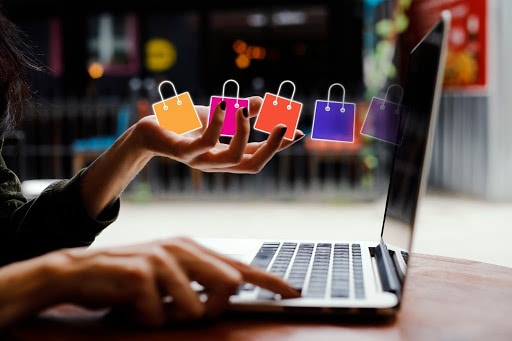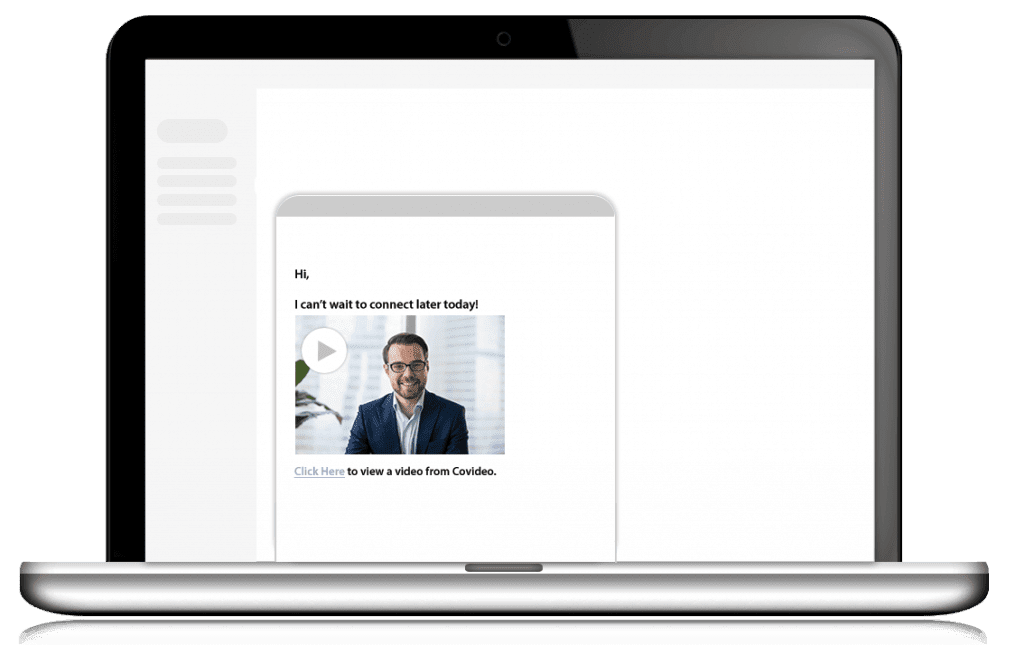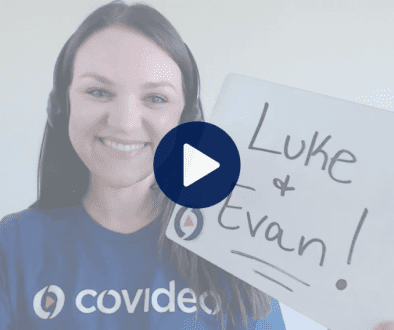Personalization 101: How to Implement Personalized Marketing
As we enter the new year, businesses will be reconsidering their marketing and sales strategies and implementing top growth trends. One of the biggest growth trends for 2022 is the rise in personalization and personalized marketing. In fact, 90% of leading marketers say personalization significantly contributes to business profitability!
Personalized marketing is marketing that is individualized for the specific customer, targeting their demographics, tastes, buying habits, and more! With personalized marketing, you demonstrate to your customers that you know them and care about them on a personal level.
There are a variety of ways that you can implement personalized marketing and thus increase customer interest and retention. In this article, we list ten ways that you can start implementing personalized marketing in your business in 2022. We also go over some personalization statistics to demonstrate why this trend is so important for growing your business. By the end of this article, you should have several new strategies for your marketing toolbox that you can use to create personalized customer experiences and grow your business in 2022.
Why Use Personalized Marketing?
The biggest reason to use personalized marketing is that, quite simply, customers want it. 69% of customers are willing to pay more for a more personalized experience. Furthermore, 68% of customers list that they stopped using a business because they felt that it doesn’t care about them. So, one of the best ways to both gain new customers and retain old ones is to offer personalized experiences that show that you care about their needs and wants.
10 Ways You Can Start Implementing Personalized Marketing
Personalized marketing doesn’t have to be complicated. You can start implementing personalized marketing strategies today by making small changes to your campaigns or investing in new software. Below, we list 10 easy and effective ways that you can start implementing personalized marketing in your business.
1. Send exclusive one-on-one offers
A great way to both increase sales and build up customer relations is sending exclusive one-on-one offers to return customers. These offers should be relevant to the customer’s interests and/or purchase history. Not only are customers more likely to use exclusive offers, they will feel more loyalty to your brand since you’ve demonstrated that you care about their personal preferences! Of course, you’ll need to make sure you’re sending relevant offers, which leads us to method #2…
2. Keep track of customer purchases
To send your customers the best offers, you need to be keeping track of their purchase history. If you know what your customer has already bought, then you can market related products and ensure that you don’t send the same offer twice. By tracking purchase history, you can make sure that new offers are relevant and demonstrate knowledge of the customer’s specific needs.
You can track customer history through a CRM platform like Salesforce or Pipedrive. These platforms can also be used to implement the other tips on this list, so you should definitely consider investing in a CRM if you haven’t already!
3. Learn customer preferences
Of course, the best way to create personalized offers for customers is to learn their personal preferences. In addition to extrapolating preferences from purchase history, you can use various methods to directly ask your customers what they like. You can send your customers surveys, ask for reviews, and have your customers fill out a personal profile. A customer profile is an especially good method of learning customer preferences, both in terms of products and services and methods of communication. You want to know how best to communicate with your customers so that you’re neither overwhelming them nor leaving them high-and-dry. If you do create custom profiles, be sure that you’re paying attention to them and noting any changes.
4. Recommend products based on customers’ previous behavior

As stated above, you should recommend products and make offers to customers based on their previous purchases and personal interests. You can also track other customer behavior, such as searched terms on your website, time spent on different pages, and email open rate to further personalize their experiences. The more information you can gather on your customers’ behavior, the better you can personalize their experience.
You can implement this personalization on the website level as well by creating messages tailored to customer actions. For example, you can use a customer messaging platform like Intercom to provide recommendations to a customer while they’re on your website depending on which page they are browsing or what products they have in their shopping cart. Be sure that any messages come across as helpful suggestions instead of annoying interruptions!
5. Add a personalized video to your message
Personalized email marketing is another popular trend for businesses. Personalized emails are 6x more likely to be clicked-through by users. Even better results can be achieved with personalized video–brands have found that personalized video messages result in an 8x increase in click-through-rates on email campaigns. With a platform like Covideo, you can send personalized video emails to customers and prospects. You can also attach CTAs to the video so that customers can set up an appointment or redirect to a website for more information after viewing your video.

The best way to personalize video messages is simply by including the customer’s name in the video. You can use a whiteboard or piece of paper to write a welcome message directly to the customer, then repeat your message at the beginning of the video. Make sure your videos come across as personable so that customers feel like they’re having a conversation with an actual person. Though personalized videos may take more time to create than mass emails, they are a perfect way to make your customer communications as personalized as possible.
6. Let customers set the boundaries of interactions
Even as you offer more personalized experiences to customers, you need to make sure that you respect their boundaries. Not everyone is comfortable giving away private information. You can respect your customers’ personal boundaries by letting them opt out of personal communications or personal information collecting. While this loss may initially hinder your personalization efforts, in the long run it is more important to retain customers by respecting their boundaries and their personal preferences for communication.
If you don’t want to have to cut off all communication, you can offer different levels of frequency or styles of interaction. Your customers can choose how often or where they receive offers from you. This way, you can continue interacting with your customers, but on their own terms so you don’t annoy or overwhelm them with too many offers or irrelevant ones.
7. Create a VIP list
Do you want to make your best customers feel extra special? Create a special VIP list and send exclusive offers or hold special events for its members. VIPs are more likely to feel personally connected to and invested in the brand. You can also implement a rewards program that adds customers to the VIP list once they complete a certain number of purchases or interactions with the brand. This will motivate all customers to engage more with your business so that they can receive exclusive discounts, thus increasing sales overall.
8. Create a customer journey map
To truly understand your customers, you need to follow and understand every step of their journey with your brand. You can do this by creating a customer journey map. A customer journey map is a visual (or digital) overview of how customers interact with your business over multiple touchpoints. This map should consider the steps a customer goes through before, during, and after doing business with you. It should also include the “why” and “how” of customer experiences as well as the “what”–include customer motivations, pain points, and thoughts as well as actions at every touchpoint.
Your customer journey map should include real customer data that you have gathered and analyzed so that it can be as accurate as possible. As such, you will probably need to gather your entire team together and dedicate a few days or more to creating this map. Once you finish, however, you will have a much more detailed and complete picture of how customers interact with your brand and thus be able to offer more personalized experiences for each step of the customer journey.
For more information on how to create a customer journey map, including visual examples, check out this definitive article on the subject by Hotjar.
9. Ask for–and use–customer feedback
Nobody knows your customers better than, well, your customers. If you’re not sure what’s working or how to better tailor customer experiences, then ask your customers for feedback! You can send a survey after a purchase to learn which parts of the purchasing journey worked and which didn’t. You can also send questionnaires or ask for direct feedback to determine how well your marketing and sales strategies are appealing to customers. Finally, you can ask for any suggestions for future products and sales from customers so that you can better target your offers to your client base.

However, if you do implement surveys or questionnaires, you need to be sure to actually use the feedback you receive, even if it’s not what you expected. If you ignore customer feedback after asking for it, the message your customers will receive is that you don’t care about their perspective. You also need to be ready to balance a variety of–and potentially opposing–perspectives and opinions. Each customer wants to know they’re valued by your business, even if they don’t make up the majority demographic or viewpoint.
If you’re having trouble getting responses to surveys, then add a fun incentive. Offer a gift card or special discount to customers who complete your survey, or enter them into a raffle for a larger prize. If you personalize your surveys and incentives to each customer, you will receive more–and better–feedback!
10 . Meet your customers where they are
What platforms are your customers using to communicate with brands? If your customers prefer to interact via email, then send them emails. If they spend more time on social media sites like Facebook and instagram, increase your presence on those platforms. You need to meet your customers where they are to interact with them.
You can do this by analyzing which channels you get the most customer response on or by directly asking customers what channels they use to communicate with businesses. If you implement a customer personal profile, then you can have customers mark where they prefer to be contacted as well as how often. And remember, let customers set the boundaries of each interaction, no matter where they take place.
Start Sending Personalized Video Emails Today
Any of the above methods of customer personalization will take time to implement. However, we can make the process easier for you with a personalized video email platform. You can Start a free trial today and begin sending out personalized videos to your customers.
With Covideo, you can record videos with your screen and/or webcam directly from your browser, mobile device, or email provider. Covideo will embed your video directly into the email. Customers can click on the video to be redirected to a page of your choosing that hosts the video and any attached CTAs. Try out Covideo today!




